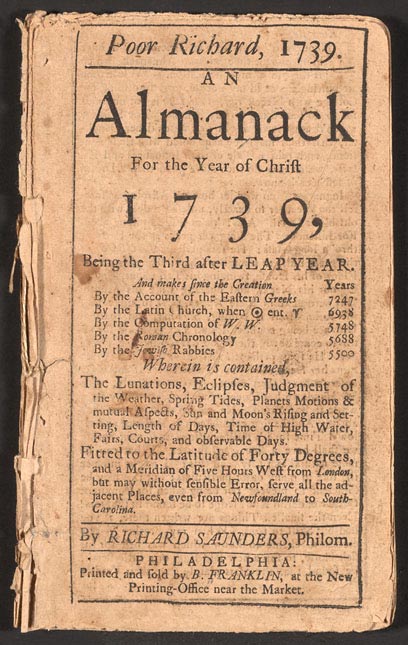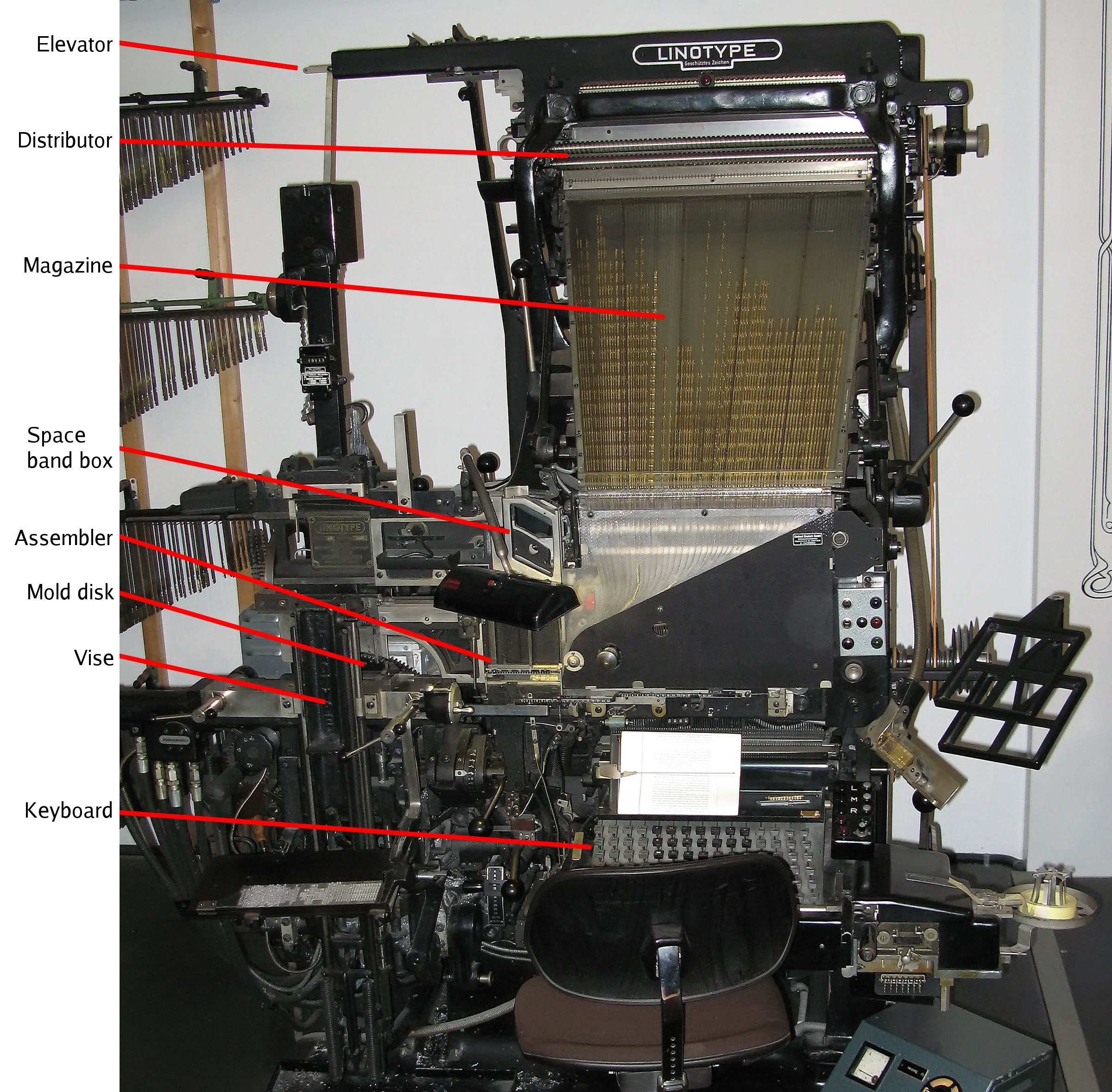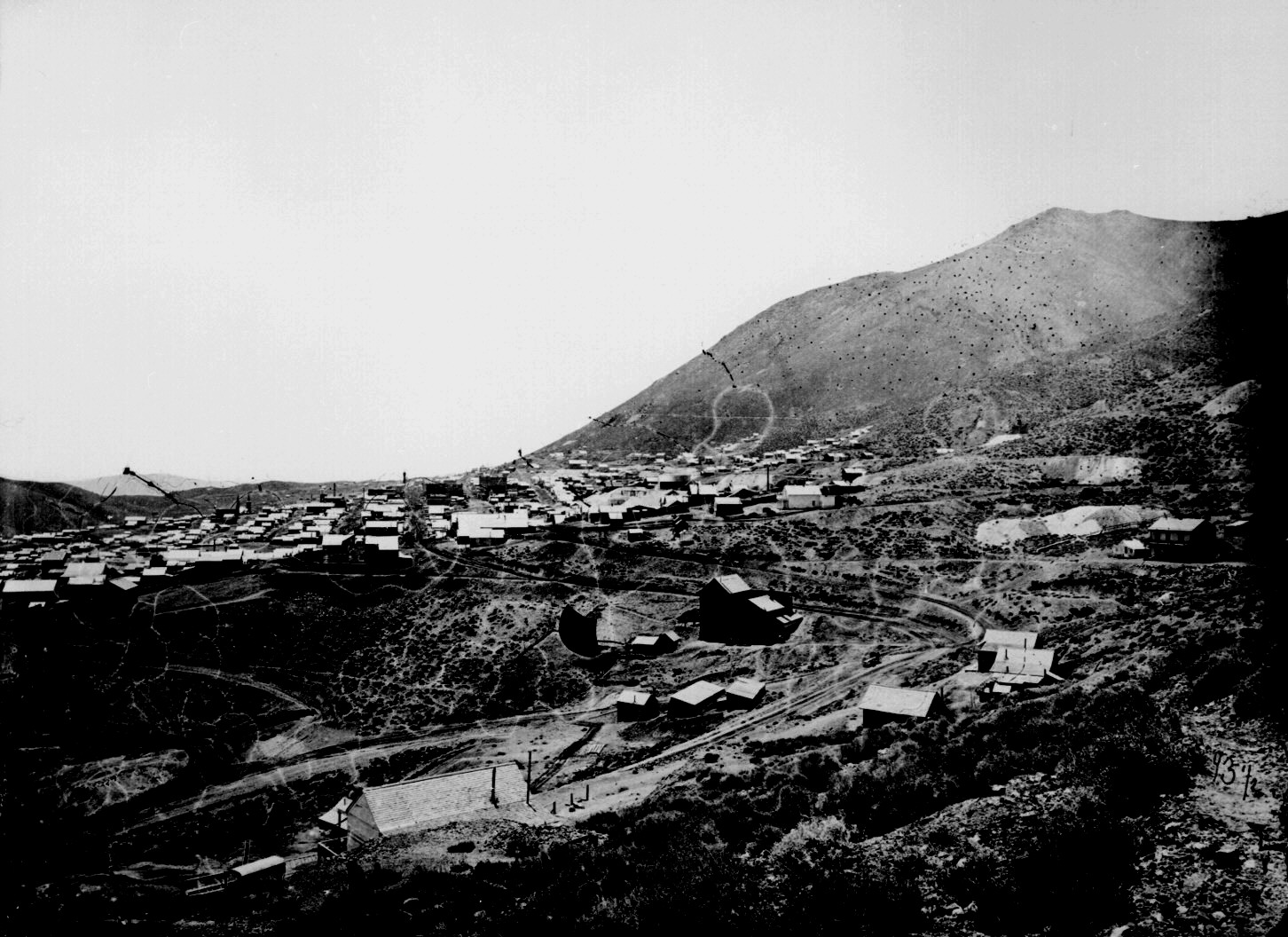|
International Printing Museum
The International Printing Museum, has one of the largest collections of antique printing presses in the United States. It offers educational programs for school groups at the museum, and also has a Ben-Franklin-type printing press on a trailer that travels to schools and public events for living history programs. Located in the Los Angeles suburbs, the museum consults for Hollywood and has provided rentals of vintage printing presses for numerous television and movie productions. History and collection David Jacobson of Gutenberg Expositions and collector Ernest A. Lindner started the museum in 1988 to house the Lindner collection of antique printing machinery. The collection has grown with significant donations and acquisitions under the leadership of the museum's board of trustees and its founding curator and executive director, Mark Barbour. The museum's collection includes a replica Gutenberg press. Gutenberg's invention of movable type was rated by ''Time'' magazine as ... [...More Info...] [...Related Items...] OR: [Wikipedia] [Google] [Baidu] |
Carson, California
Carson is a city in Los Angeles County, California, United States, in the South Bay region of Los Angeles, located south of downtown Los Angeles and approximately away from Los Angeles International Airport. Incorporated on February 20, 1968, Carson is the newest municipality in the South Bay region of Metropolitan Los Angeles. The city is locally known for its plurality of Filipino-Americans and immigrants. As of 2019, it was estimated that the city had a population of 91,394. History The year 1921 marked the first drilling for oil at Dominguez Hill, on the northwest side of the Rancho San Pedro (also called Rancho Domínguez), site of the famous battle during the Mexican–American War called the Battle of Rancho Domínguez in 1846. The mineral rights to this property were owned by Carson Estate Company, the Hellman Family, the Dominguez Estate Company, and the Burnham Exploration Company of Frederick Russell Burnham. On September 7, 1923, Burnham Exploration partneri ... [...More Info...] [...Related Items...] OR: [Wikipedia] [Google] [Baidu] |
Poor Richard's Almanack
''Poor Richard's Almanack'' (sometimes ''Almanac'') was a yearly almanac An almanac (also spelled ''almanack'' and ''almanach'') is an annual publication listing a set of current information about one or multiple subjects. It includes information like weather forecasts, farmers' planting dates, tide tables, and othe ... published by Benjamin Franklin, who adopted the pseudonym of "Poor Richard" or "Richard Saunders" for this purpose. The publication appeared continually from 1732 to 1758. It sold exceptionally well for a pamphlet published in the Thirteen Colonies; print runs reached 10,000 per year. Franklin, the American inventor, wikt:statesman, statesman, and accomplished Early American publishers and printers, publisher and printer, achieved success with ''Poor Richard's Almanack''. Almanacks were very popular books in History of the United States (1776–1789)#Declaration of Independence, colonial America, offering a mixture of seasonal weather forecasts, practical hou ... [...More Info...] [...Related Items...] OR: [Wikipedia] [Google] [Baidu] |
Technology Museums In California
Technology is the application of knowledge to reach practical goals in a specifiable and reproducible way. The word ''technology'' may also mean the product of such an endeavor. The use of technology is widely prevalent in medicine, science, industry, communication, transportation, and daily life. Technologies include physical objects like utensils or machines and intangible tools such as software. Many technological advancements have led to societal changes. The earliest known technology is the stone tool, used in the prehistoric era, followed by fire use, which contributed to the growth of the human brain and the development of language in the Ice Age. The invention of the wheel in the Bronze Age enabled wider travel and the creation of more complex machines. Recent technological developments, including the printing press, the telephone, and the Internet have lowered communication barriers and ushered in the knowledge economy. While technology contributes to econom ... [...More Info...] [...Related Items...] OR: [Wikipedia] [Google] [Baidu] |
Literary Museums In The United States
Literature is any collection of written work, but it is also used more narrowly for writings specifically considered to be an art form, especially prose fiction, drama, and poetry. In recent centuries, the definition has expanded to include oral literature, much of which has been transcribed. Literature is a method of recording, preserving, and transmitting knowledge and entertainment, and can also have a social, psychological, spiritual, or political role. Literature, as an art form, can also include works in various non-fiction genres, such as biography, diaries, memoir, letters, and the essay. Within its broad definition, literature includes non-fictional books, articles or other printed information on a particular subject.''OED'' Etymologically, the term derives from Latin ''literatura/litteratura'' "learning, a writing, grammar," originally "writing formed with letters," from ''litera/littera'' "letter". In spite of this, the term has also been applied to spoken or s ... [...More Info...] [...Related Items...] OR: [Wikipedia] [Google] [Baidu] |
Johannes Gutenberg
Johannes Gensfleisch zur Laden zum Gutenberg (; – 3 February 1468) was a German inventor and Artisan, craftsman who introduced letterpress printing to Europe with his movable type, movable-type printing press. Though not the first of its kind, earlier designs were restricted to East Asia, and Gutenberg's version was the first to Global spread of the printing press, spread across the world. His work led to an information revolution and the unprecedented mass-spread of literature throughout Europe. It also had a direct impact on the development of the Renaissance, Reformation and Humanism, humanist movement, ushering in the modern period of human history. His many contributions to printing include the invention of a process for mass-producing movable type; the use of oil-based ink for printing books; adjustable molds; mechanical movable type; and the use of a wooden printing press similar to the agricultural screw presses of the period. Gutenberg's method for making type is tr ... [...More Info...] [...Related Items...] OR: [Wikipedia] [Google] [Baidu] |
Museums In Los Angeles County, California
A museum ( ; plural museums or, rarely, musea) is a building or institution that cares for and displays a collection of artifacts and other objects of artistic, cultural, historical, or scientific importance. Many public museums make these items available for public viewing through exhibits that may be permanent or temporary. The largest museums are located in major cities throughout the world, while thousands of local museums exist in smaller cities, towns, and rural areas. Museums have varying aims, ranging from the conservation and documentation of their collection, serving researchers and specialists, to catering to the general public. The goal of serving researchers is not only scientific, but intended to serve the general public. There are many types of museums, including art museums, natural history museums, science museums, war museums, and children's museums. According to the International Council of Museums (ICOM), there are more than 55,000 museums in 202 countries ... [...More Info...] [...Related Items...] OR: [Wikipedia] [Google] [Baidu] |
Printing Museums In The United States
Printing is a process for mass reproducing text and images using a master form or template. The earliest non-paper products involving printing include cylinder seals and objects such as the Cyrus Cylinder and the Cylinders of Nabonidus. The earliest known form of printing as applied to paper was woodblock printing, which appeared in China before 220 AD for cloth printing. However, it would not be applied to paper until the seventh century.Shelagh Vainker in Anne Farrer (ed), "Caves of the Thousand Buddhas", 1990, British Museum publications, Later developments in printing technology include the movable type invented by Bi Sheng around 1040 AD and the printing press invented by Johannes Gutenberg in the 15th century. The technology of printing played a key role in the development of the Renaissance and the Scientific Revolution and laid the material basis for the modern knowledge-based economy and the spread of learning to the masses. History Woodblock printing Woodblock pri ... [...More Info...] [...Related Items...] OR: [Wikipedia] [Google] [Baidu] |
Linotype Machine
The Linotype machine ( ) is a "line casting" machine used in printing; manufactured and sold by the former Mergenthaler Linotype Company and related It was a hot metal typesetting system that cast lines of metal type for individual uses. Linotype became one of the mainstay methods to set type, especially small-size body text, for newspapers, magazines, and posters from the late 19th century to the 1970s and 1980s, when it was largely replaced by phototypesetting and digital typesetting. The name of the machine comes from the fact that it produces an entire line of metal type at once, hence a ''line-o'-type''. It was a significant improvement over the previous industry standard of manual, letter-by-letter typesetting using a composing stick and shallow subdivided trays, called "cases". The Linotype machine operator enters text on a 90-character keyboard. The machine assembles ''matrices'', which are molds for the letter forms, in a line. The assembled line is then cast ... [...More Info...] [...Related Items...] OR: [Wikipedia] [Google] [Baidu] |
Territorial Enterprise
The ''Territorial Enterprise'', founded by William Jernegan and Alfred James on December 18, 1858, was a newspaper published in Virginia City, Nevada. Published for its first two years in Genoa in what was then Utah Territory, new owners Jonathan Williams and J. B. Woolard moved the paper to Carson City, the capital of the territory, in 1859. The paper changed hands again the next year; Joseph T. Goodman and Dennis E. McCarthy moved it again, this time to Virginia City, in 1860. Noted author Mark Twain wrote for the paper during the 1860s along with writer Dan DeQuille. To cover for DeQuille, who took time off to visit his family in Iowa, the young Sam Clemens was hired. Located steps from the ''Enterprise'' offices, Mark Twain and Dan DeQuille, lifelong friends, shared a room at 25 North B St. in Virginia City. The paper was owned and operated by the Blake family in the 1890s through the 1920s. The paper went out of publication for a while and was revived by Helen Crawfo ... [...More Info...] [...Related Items...] OR: [Wikipedia] [Google] [Baidu] |
Virginia City
Virginia City is a census-designated place (CDP) that is the county seat of Storey County, Nevada, and the largest community in the county. The city is a part of the Reno– Sparks Metropolitan Statistical Area. Virginia City developed as a boomtown with the 1859 discovery of the Comstock Lode, the first major silver deposit discovery in the United States, with numerous mines opening. The population peaked in the mid-1870s, with an estimated 25,000 residents. The mines' output declined after 1878, and the population declined as a result. As of the 2020 Census, the population of Virginia City was 787. History Peter O'Riley and Patrick McLaughlin are credited with the discovery of the Comstock Lode. Henry T. P. Comstock's name was associated with the discovery through his own machinations. According to folklore, James Fennimore, nicknamed Old Virginny Finney, christened the town when he tripped and broke a bottle of whiskey at a saloon entrance in the northern section of Gol ... [...More Info...] [...Related Items...] OR: [Wikipedia] [Google] [Baidu] |
Mark Twain
Samuel Langhorne Clemens (November 30, 1835 – April 21, 1910), known by his pen name Mark Twain, was an American writer, humorist, entrepreneur, publisher, and lecturer. He was praised as the "greatest humorist the United States has produced", and William Faulkner called him "the father of American literature". His novels include ''The Adventures of Tom Sawyer'' (1876) and its sequel, ''Adventures of Huckleberry Finn'' (1884), the latter of which has often been called the " Great American Novel". Twain also wrote ''A Connecticut Yankee in King Arthur's Court'' (1889) and '' Pudd'nhead Wilson'' (1894), and co-wrote The Gilded Age: A Tale of Today (1873) with Charles Dudley Warner. Twain was raised in Hannibal, Missouri, which later provided the setting for ''Tom Sawyer'' and ''Huckleberry Finn''. He served an apprenticeship with a printer and then worked as a typesetter, contributing articles to the newspaper of his older brother Orion Clemens. He later became a river ... [...More Info...] [...Related Items...] OR: [Wikipedia] [Google] [Baidu] |
Pennsylvania Gazette
''The Pennsylvania Gazette'' was one of the United States' most prominent newspapers from 1728 until 1800. In the several years leading up to the American Revolution the paper served as a voice for colonial opposition to British colonial rule, especially as it related to the Stamp Act, and the Townshend Acts. History The newspaper was first published in 1728 by Samuel Keimer and was the second newspaper to be published in Pennsylvania under the name ''The Universal Instructor in all Arts and Sciences: and Pennsylvania Gazette'', alluding to Keimer's intention to print out a page of Ephraim Chambers' '' Cyclopaedia, or Universal Dictionary of Arts and Sciences'' in each copy. On October 2, 1729, Samuel Keimer, the owner of the ''Gazette'', fell into debt and before fleeing to Barbados sold the newspaper to Benjamin Franklin and his partner Hugh Meredith, who shortened its name, as well as dropping Keimer's grandiose plan to print out the ''Cyclopaedia''. Franklin not only p ... [...More Info...] [...Related Items...] OR: [Wikipedia] [Google] [Baidu] |










